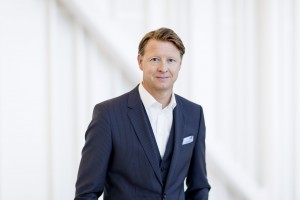
After more than 40 years of operation, DTVE is closing its doors and our website will no longer be updated daily. Thank you for all of your support.
Ericsson taps into mobile video, launches LTE broadcast trial with Vodafone
Mobile video traffic will grow more than 75% this year as IT and telecom networks converge in an increasingly data-centric world, according to Ericsson president and CEO Hans Vestberg.
Speaking at a media and analyst briefing at Mobile World Congress (MWC) in Barcelona, Vestberg claimed that the global probability of getting mobile data throughput of at least 1Mbps during 2014 would increase, but not by enough, and said “we need continuous app coverage to support our new ways of living and doing business.”
“We use our smartphones to work, live, and entertain ourselves in more powerful ways every day. That demands networks that provide superior performance, and our leadership across generations of technology – from fixed, to wireless, to LTE, and, in the future, 5G – contributes to our ability to deliver that to our customers,” said Vestberg.
He claimed that global LTE subscriptions reached 200 million last year, with more than 50% of all LTE smartphone traffic now going through Ericsson networks.
Detailing a range of key interest areas for Ericsson this year, he said that that the firm’s focus on IP and network technology and services can be seen in its recent agreement with packet optical-network provider Ciena.
Vestberg also said that 43% of Ericsson’s revenues now come from services, as opposed to hardware, with the services side of the business playing a key role in the company’s transformation.
In a wide-ranging talk that included details of several deals for Ericsson’s indoor cellular Radio Dot Systems, as well as a connected LED street lighting deal with Philips, Vestberg also highlighted Ericsson’s work in the TV anywhere space.
At MWC Ericsson is showcasing its ‘future TV anywhere’ service – an end-to-end integrated platform for pay TV service providers, designed to combine the quality of service and content depth of pay TV with the interactivity and multi-screen capabilities of OTT video start-ups.
Vestberg said that Ericsson is working at the intersection of TV, media and telecoms and is partnering with broadcasters and cable operators around the world to make content available across any screen.
“[Ericsson’s] latest acquisition in TV media was Azuki, which is a DRM company – seeing that you have watermarks on the content from the beginning to end in next-generation TV. So we definitely see this as an important area for us to support our customers,” said Vestberg.
Separately, Ericsson has announced that Vodafone Germany is the first European carrier to conduct live tests with its LTE Broadcast platform, along with technologies partners Qualcomm and Samsung.
The trial took place at Borussia Mönchengladbach’s football stadium on February 22.
As part of Vodafone Germany’s network modernisation programme, LTE Broadcast could soon be available in further German stadiums.
“There is growing demand for high quality video content on mobile devices and LTE Broadcast gives our customers a brand new mobile media experience,” said Eric Kuisch, CTO Vodafone Germany.
“This technology enables multiple broadcast sessions to be viewed simultaneously, so our customers will be able to watch Sky’s Premiere League Summary or exclusive video content from the stadium they’re in.”



